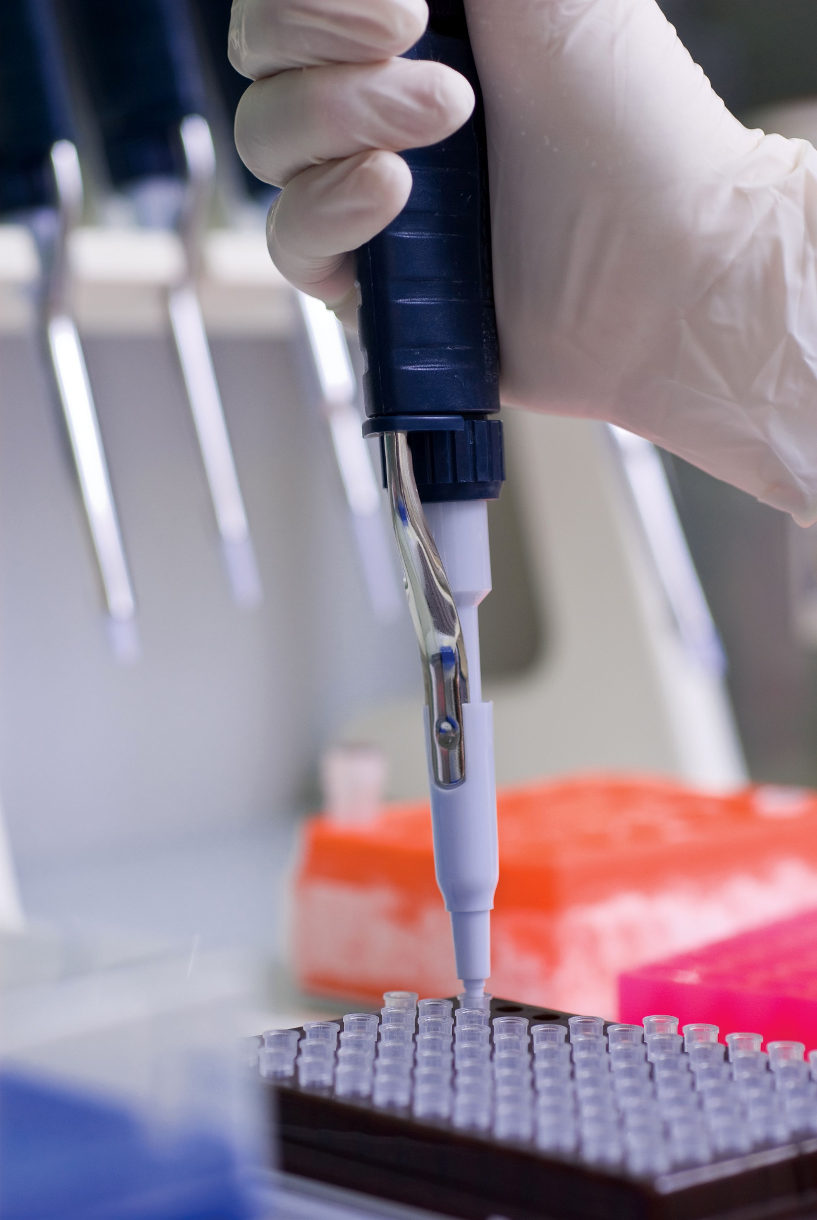A revolution against Cancer
In less than a decade, cancer should be the main cause of death in Porto Alegre, one of the cities in Latin America that shows the highest incidence of the disease. New medications, especially those relying on immunotherapy (which uses the immune system to fight the enemy), are bringing the treatment to another level. Patients of the Center for Clinical Research of São Lucas Hospital (HSL) are receiving some of the most effective treatments to fight the disease, which is yet to be commercially available. They have access to the same protocols used by the major world centers. As not all of the patients have a satisfactory response to therapy and the evolution of tumors is still a challenge for science, PUCRS is investing in basic, translational and clinical research, making the institution a national and international reference in the area. In order to maximize the results and bring about new projects, several professionals – oncologists, surgeons, pathologists, chemists, physicists, pharmacists and biologists – are working together in the Cancer Research Center (NP-Cancer), coordinated by the School of Medicine, by the Hospital’s Oncology Service and by the Institute of Biomedical Research (IPB). The interdisciplinary solutions put forward in the center are intended to provide significant contributions for the development of science in the near future. “These projects will give our students and professors considerable reputation with the most renowned academic settings”, says André Fay, School of Medicine professor and head of the Oncology Service.
Basic research creates countless opportunities. Although it may not be immediately applicable, it can be used to elucidate the biological processes of malignant tumors. Molecules studied in laboratories may be materialized in the form of medications to be used in clinical practice. It takes from 8 to 15 years and an investment of up to BRL 2,5 billion to accomplish that goal. Since only a small fraction of thousands of compounds under investigation is actually effective, the whole process becomes quite expensive.
As an experienced oncologist, and Professor Carlos Barrios claims that these investments are not addressing the needs. “There is a plethora of strategies, which employ technological advances and the identification of specific targets, to keep the tumor from growing. We are looking for alternatives to move forward efficiently and at a low cost.”
For Barrios, the Group for Cancer Research is an institutional response to an issue that has become epidemical in the country. “We have perfect conditions to work on a broad strategic plan of research.” In 10 or 20 years, cancer should be the main cause of death on the planet. In the USA, the incidence in people aged 45+ is even higher than for other diseases.
Samples on ice
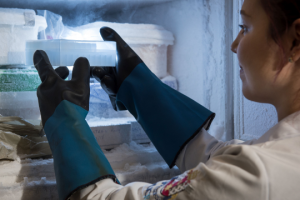
Photo: Bruno Todeschini
Once they are collected, samples are stored in a solution known as RNA later, which preserves them for up to four hours before freezing. At IPB, they will stay at a temperature of -80°C. If the temperature goes up, either due to power outages or sealing problems, an alarm will go off.
The Center for Clinical Oncology, opened in 2016, features a new Chemotherapy Unit, which serves more than 2,000 patients every month, both universal and private ones. The facility offers chemotherapy sessions using biological and oral administration drugs. “The Oncology Service at PUCRS is getting better and better each day and should become a reference both in the local and national scenario, as a result of the research efforts carried out”, claims Fay.
The Radiotherapy Service relies on two cutting-edge machines: linear accelerators Clinac iX and Trilogy. They are used in radiosurgery, intensity-modulated radiotherapy, which is employed to protect organs or structures around the tumor; and image-guided radiation therapy. Diagnostic methods using magnetic resonance and PET-CT, offered by the Brain Institute, a reference in this area, are available to patients.
International
Oncologist Gustavo Werutsky, from São Lucas Hospital serves as the new chair of the Latin American Cooperative Oncology Group (Lacog). Several other medical doctors from PUCRS and School of Medicine professors are members of this organization, which congregates 147 oncologists from 70 institutions in 15 countries. “The plan is to take part in international studies and work on projects on the most common tumors in our region. For instance, cervical cancer is one of three most common types of cancer in Latin American women but is rare in Europe and in the USA”, asserts Werutsky.
off
New possibilities with Biobanco
In order to increase the number of investigations, PUCRS has put together the Biobanco, a bank consisting of human biological material, the first in the State of Rio Grande do Sul accredited by the National Commission of Ethics in Research. The opening collection is to be studied by oncology teams and is located at the Institute of Biomedical Research. Up until 2011, human samples could only be stored for immediate application in research. “Not always does the researcher have a project including samples, hypotheses, a schedule and a budget set at the time of collection, and it’s a shame to discard such a rare and scarce material. Now we can store it for future use. Technologies have changed too and now we can investigate other areas”, says Professor Clarice Alho, from the School of Sciences, who designed the Biobanco project, in representation of the Office of the Vice President for Research, Innovation and Development. In addition to oncology material, the project will include the teeth collections of the Dentistry department, and rheumatology samples, but it will be open to other areas of the institution.
Higher Level
Professor André Fay goes on to say that this brings the University to a higher level, as it shows advances in science and health care provision. “In a collaborative work, we have put together the Biobanco, which will make it possible to work on research protocols throughout the generations to come.” His partner Márcio Debiasi adds that the Biobanco is one of the actions underlying the University’s quest for accreditation in terms of research on a global scale.
Once patients grant their consent, the samples are labeled and frozen. The owner’s identities are concealed, though. Clinical information of each case will be stored too. In the long run, it will feature more specific data, and new research will be facilitated. For instance, it might show a group with certain gene alterations.
Researchers interested in conducting research are expected to report to the NP-Cancer’s scientific commission, which will assess the relevance, viability and ethical aspects of the project. “Because the biological material comes in limited quantities, we must conduct a very strict analysis”, warns Fay. The projects need to be further approved by the Committee of Ethics in Research of PUCRS.
Professors Henrique Fillmann and Lúcio Fillmann have worked on the collection of colon cancer tissues. And December 2016 saw the beginning of collection of samples from patients subject to breast biopsy at HSL. The pilot project assesses the conditions for collection and storage of materials. Additional fragments are removed from suspicious nodes. If they test positive, they are sent to Biobanco. Mammogram and breast ultrasound services will play an important role, too.
Different Strategies
Professor Felipe Zerwes, an expert in the area of Mastology, claims that not many investigations carried out in Brazil rely on their own Biobanco. “International data are largely used. But I wonder if these international patients are similar to our local ones. We need to know them in detail, and this may have an influence on public health policies.” He illustrates that the National Institute of Cancer recommends mammograms for women aged 50 – 69 whereas science societies for women at the age of 40. 30% of cases in RS have been reported for patients below the age of 50 and above 70. The State Department of Health endorses the beginning of treatment at the age of 40. “We can only do that if we study the specific population. And the Biobanco will take us one step further. We’ll see biological characteristics of the tumor. Once we know that patients have positive hormone receptors, we’ll be able to adopt a different strategy for prevention and treatment.”
The whole point is to include the diagnostic images into the database, which will be under the responsibility of the Brain Institute. “The relationship between the findings from these exams and the current diagnosis of cancer and biochemical markers may reduce the need for a biopsy, for instance”, says radiologist Bruno Hochhegger.
Yerba mate could reduce tumor proliferation
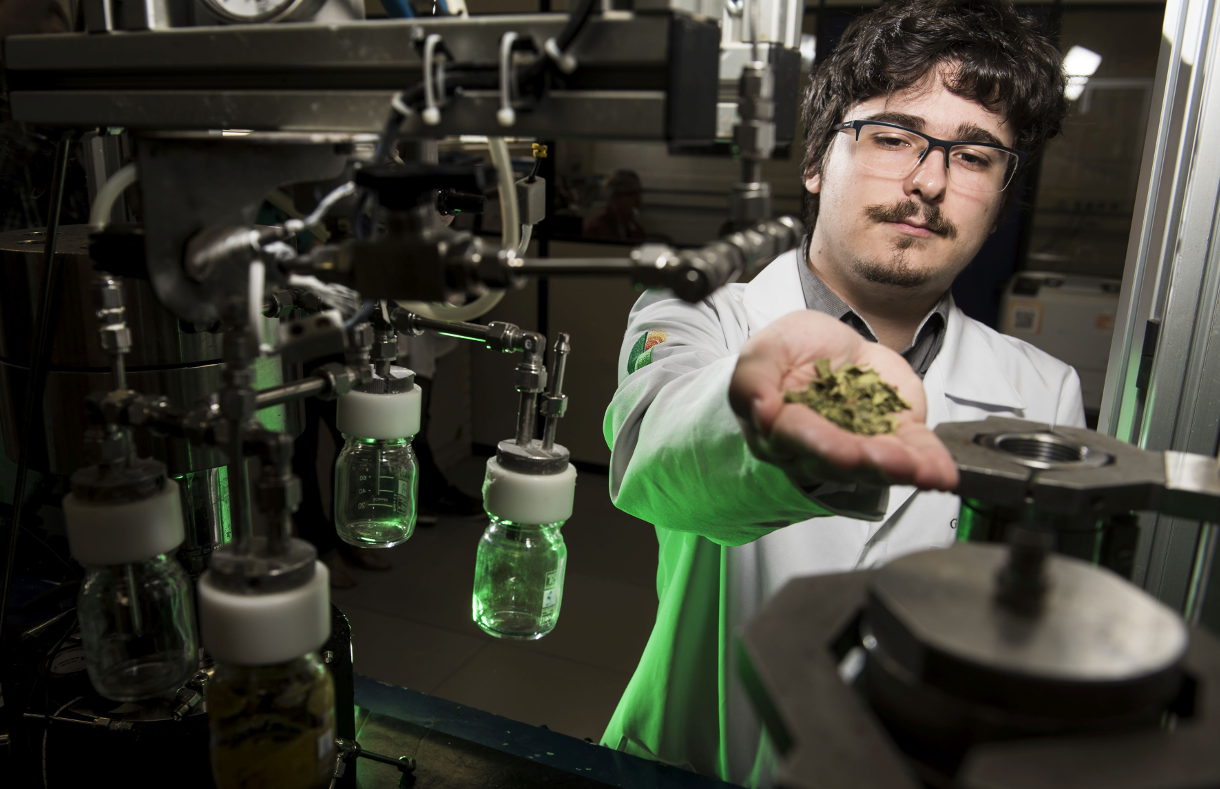
Research has looked at its benefits
Is yerba mate associated with the high incidence of esophagus cancer in the South of Brazil? Research carried out by the School of Health Sciences, in partnership with the School of Technology, has sought to address this question by looking at the specific effects of the plant. Surprisingly enough, some compounds of chimarrão, a tea made out of the herb, which is typical of the South of the country, have reduced the number of tumor cells. “The good results come from an analysis of the plant as a whole rather than the caffeine contained in it alone”, says Professor Fernanda Morrone, from the Laboratory of Applied Pharmacology, who coordinates the study.
The Laboratory of Unit Operations, of the Chemical Engineering program, is responsible for extracting the compounds. Researchers are working on infusions of yerba mate with and without caffeine. However, these must be rich in other substances, such as flavonoids. Then, they are tested for the treatment of esophagus cancer cells.
The next stage is to test the substances in normal esophagus cells to check whether they can be used for the prevention of cancer. However, in order to prove its effectiveness, Dr Morrone claims that more tests are needed in animal models. Epidemiological studies on the consumption of the drink and the incidence of esophagus cancer are underway. Additionally, patients will be monitored for risk factors, treatments and drug interaction. The group also intends to test the compound in urinary bladder cancer cells.
According to the National Cancer Institute (2016), in the South of Brazil, esophagus cancer is the fifth most common type of cancer in male individuals, in a list that does not include non-melanoma skin cancer. The high incidence may be attributed to the consumption of hot drinks. The yerba mate infusion should be enjoyed at a moderate temperature. Temperatures lower than 70o C are ideal for they present lower risks (once you hear the water sizzle).
In Class
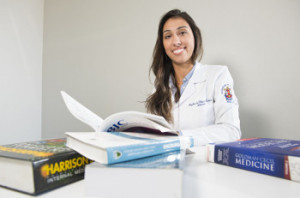
Photo: Camila Cunha
In the course on Fundamentals of Research, School of Medicine students are expected to work on different projects in several laboratories within the University. Devised by professor André Fay in 2015, it gives students an opportunity to work on scientific research since the very beginning of the program. “The course is intended to get students involved in research activities as they learn the basic concepts under the supervision of their professors in their groups, and consequently leading to the publication of the projects developed in class.” It has been very fruitful, as results have shown to be relevant.
The course was helpful for student Angélica Cardoso, 23, as she got in contact with oncology researchers, an area of interest to her. “I’ll be able to do what most people want: put the projects in practice.” Although the semester is coming to an end, the group is going to look at specific mutations in stomach tumors, by using samples from HSL patients. These alterations can be seen in cervical cancer and may provide patients with a better response to the immunotherapy treatment. “The larger the number of antigens in blood, the higher the chance for them to be recognized by the immune system and targeted by medication”, explains Fay, who advises students’ projects.
Boosting hopes at the Center for Clinical Research |
In 20 years, the Center for Clinical Research (CPC) of São Lucas Hospital has served more than 2,500 patients in the area of oncology, out of which 1,500 have been subjects of investigation. They gained free access to medications available at the most important world centers and which are yet to be commercially available. “Patients receive the same treatment they would receive if they were at the Memorial Sloan Kettering Center in New York or at MD Anderson, in Houston”, claims Professor Carlos Barrios. The basic treatment is usually more effective than the one offered by the local universal system. “We asked ourselves what the best type of therapy is today. This is the best one. If other types of therapies are needed, then we’ll work on them.” CPC is one of the Centers in Brazil that is a research reference in this area. “And we can play a very important role in it. We can take part in a new line of research to better understand how immunotherapy works”, says Professor André Fay. One example of the effectiveness of this are breast cancer patients, as 20% of them have shown HER- 2 protein overexpression (with as many as 2 million of these molecules, whereas the others have shown 2,000). This makes breast cells grow into more aggressive tumors, but the use of antibodies (new drugs) targeted against this molecule is facilitated. “Results are impressive. It’s been suggested that some people have found a cure”, claims Barrios. Besides the contributions of antibodies trastuzumab and pertuzumab, which maximize the effects of chemotherapy, other efficient drugs have been offered, such as trastuzumab conjugates combined with chemotherapy. In this case, the antibody points to the right target, the tumor cell, with no side effects. Most research on this medication, involving 2,200 patients from 40 countries, was coordinated by Barrios. There have been progresses in terms of lung and kidney cancers. For the latter, things have changed dramatically since 2000. “We play a very important role in every investigation on new drugs. We are conducting epidemiological studies in order to learn the reality of the South of Brazil.” |
Proteins to fight cancer
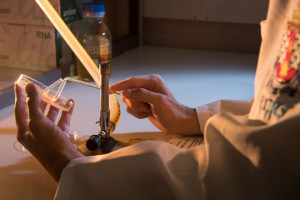
Photo: Bruno Todeschini
IPB’s Laboratory of Cell and Molecular Immunology, headed by Professor Cristina Bonorino, is studying the potential of a fragment of the protein HSPBP1 to be used as medication. Funded by Finep, studies on breast, uterus and lung tumor cells have shown great results. “Up until now, we did not know what this protein was useful for; we only knew it was related to HSP70, which is important for it keeps the tumor from growing. The study has shown that when the HSPBP1 is increased, patients have a longer survival rate; the spread of the disease is halted”, claims Dr Bonorino. The investigation, which has been patented, seeks to address whether the immune response is being activated or the tumor growth is being inhibited directly.
Experiments using images of animal models at the Brain Institute have shown that the protein has a direct impact on the target. Nine years ago, Vince Guerriero, then professor at the University of Arizona, discovered the protein, read an article written by Cristina’s group and decided to test it in patients. The article drew insights from the doctoral dissertation written by Ana Paula Souza, who is now a Professor at the School of Health Science.
Cristina, from the School of Sciences, who has been working in the area of immunology for 30 years, could not be happier about the advances in the area. She adds that this therapy is helpful for, for instance, 25% of patients with metastatic melanoma, for which there was no cure. In combination with immunology treatment, this number may be increased to 40%. “It’s just a matter of time until it is available with the universal system”, claims she. As the tumor changes, different medications are needed. “Individual therapy is what the future holds.”
One major question that remains unaddressed is why it is not helpful to some people, even with the molecular targets. “Sometimes the medication can trigger a certain response but another molecule may offer resistance. These mechanisms are still not clear.” Cristina coordinates several projects seeking to get the answer for those questions.
Seeking better treatment
Studies conducted by School of Medicine professors André Fay and Márcio Debiasi, relying on the support of students, seek to find out the second line of treatment for metastatic kidney cancer if the first fails and the tumor grows again. Extensive study sessions involving professors and students are needed for confirmation of each step of the process before data are compiled and analyzed. Harvard and other universities are serving as collaborators. Results are expected to bring benefits to patients in the medium run.
This is called meta-analysis, the last stage of an investigation which serves to guide clinical practice. “Once a drug is developed, from molecule discovery up to tests in humans, it is common that investigations on a similar topic present diverging results. Meta-analysis comes out as a validated methodology to give a clinical perspective to science and help the scientific community to work out the best treatment to patients”, says oncologist Debiasi.




